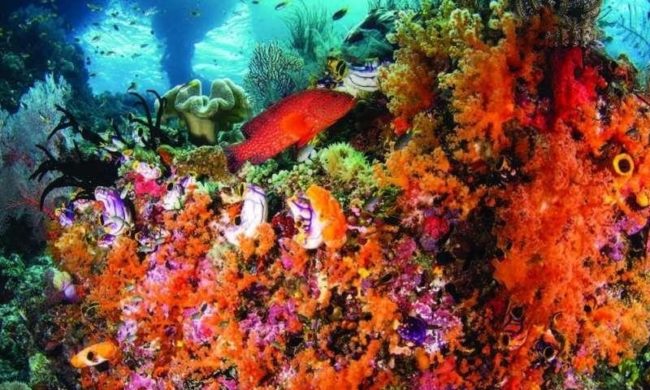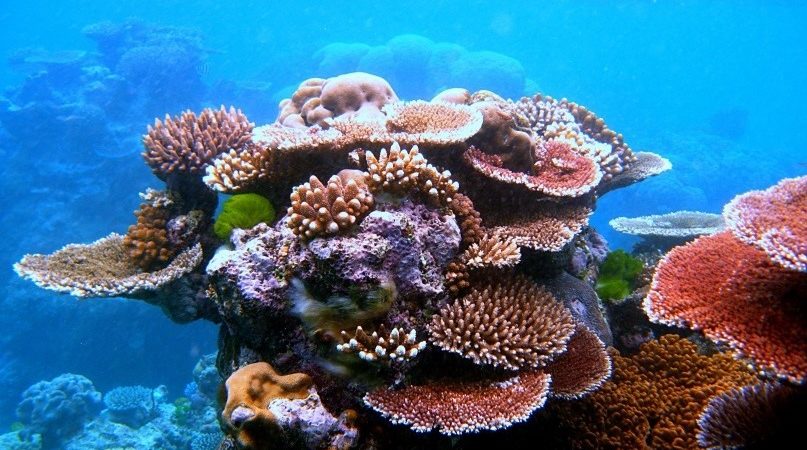Author(s): Gioietta Kuo
OCEAN WARMING
Every year since the industrial age began in the 18th century we have been putting massive amounts of carbon dioxide and other greenhouse gases like methane into the atmosphere. Solar energy striking the earth is either reflected back into space or absorbed and then reflected back as heat. Greenhouse gases, GHG, amplify the heat because they prevent heat energy from releasing from the earth system.
Since the 1870s the oceans have soaked up more than 90 % of the excess heat. According to IPCC, this has led to an average of around 0.550 C rise [1]. But the warming is accelerating because 9 of the 10 hottest years on record have happened during the 21st century. The greatest ocean warming has taken place close to the surface, with the upper 75 meters of the ocean warming by an average of 0.11°C each decade between 1971 and 2010. [2]
Increasing ocean temperatures affect marine species and its ecosystems. Most ocean dwellers, from plankton to fish to whales and corals are sensitive to even slight changes in temperature. Loss of breeding ground for marine fishes and mammals affects the human population. It threatens food security, increases the prevalence of diseases and causes more extreme weather events and loss of coastal protection.
CORAL REEFS
Coral reefs are found in more than 100 countries around the world. Most reefs are located in the tropics in the Pacific Ocean, the Indian Ocean, the Caribbean Sea, the Red Sea, and the Persian Gulf. Corals are also found farther from the equator in places where warm currents flow out of the tropics, such as in Florida and southern Japan. Worldwide, coral reefs cover an estimated 110,000 square miles (284,300 square kilometers.[3]
Following is a table for the larger coral reefs:
TABLE 1
REEF NAME AREA km2 LENGTH km
- Great Barrier Reef. 344,400 2500
- Amazon Reef 9300 1000
- Belize Mesoamerican Reef 900
- Apo Reef Philippines 34

Coral reef at palmyra.jpg
The world’s greatest coral reef is undoubtedly the Great Barrier Reefs of Australia. Corals are beautiful in color, but they also serve a very useful function for the planet. First they buffer shorelines from the effects of hurricanes. Then an estimated 500 million people earn their livelihoods from the fishing stocks and tourism opportunities coral reefs provide. An estimated 4000 fish species and about 25% of marine life depend on these corals. Fish use corals as breeding ground. They also keep the algae that grow on corals in check, allowing corals to breathe and access sunlight. Corals are like underwater rainforests, yet unlike a forest, corals are animals. The soft polyps inside the hard part of the coral are naturally translucent and get their famous colors from algae living inside them. When corals experience stress from hot temperatures or pollution, they end their symbiotic relationship with this algae, typically expelling them and turning white. This bleaching was intensified in 2016 during the EL Nino weather pattern which increased the water warming in the Pacific and killed off 1/3 of the corals in the 1500 mile long of the Great Barrier Reef. Even though bleached corals still live but they eventually die and turn brown,

Coral bleaching aims.gov.au
HOW TO REVERSE CORAL BLEACHING
- Limiting GHG emission by stopping to use fossil fuels. This will mitigate the impact of climate change on our ecosystems.
- Stop deforestation and plant new forests.
- Protecting and restoring marine and coastal ecosystems. A recent assessment of 1800 reefs in 41 countries found that only 5% of reefs were healthy and able to provide all of the byproducts such as fish stocks and biodiversity. Scientists are concerned that warming oceans, pollution, ocean acidification, overfishing and physical destruction will eventually kill the coral reefs before the next century. To stop the decline there should be more marine protected parks.
- Conservationists in Florida Keys are using natural selection to harvest samples of corals that have survived the environmental stress naturally, breeding them by hand and reattaching them to the reef. The center has 46,000 corals growing on underwater plastic lattices. They have regrown over 70,000 corals. In Bahamas, researchers have elected corals with robust genes for restoration. Creating marine refuge where fishing, mining and recreation of humans are all off limits should make the reefs more resilient.
- Use healthy genes to preserve the species. In Florida, International Center for Coral Reef Research and Restoration are harvesting samples of robust corals that have survived the environmental stresses breeding them naturally and reattaching them to the reef.. So far, 70,000 corals from 5 different species have been grown on damaged reefs.
- In Massachusetts, researchers have tried providing internal waves beneath the ocean’s surface that bring cooler currents to heat struck corals. Adaptation of some corals in a warm lagoon in Palau exhibit a natural resistance to warm water.
- there is evidence that reefs are slowly moving poleward at a staggering rate of 14 km/year [5]
- Strengthening scientific research, governments could do more to measure the effects of ocean warming on our ecosystems and design adaptation strategies to mitigate coral dying,
CONCLUSION
As long as humanity continues to put more and more GHG into the atmosphere, ocean warming , melting of our ice reserves -Greenland and Antarctica and sea level rise will continue unabated. Coral bleaching with its drastic consequences to human harvesting is only one of the many effects of climate change. When is society going to wake up and reduce the use of fossil fuel and switch to alternatives such as wind, solar and most of all nuclear energy.
—————————————————————————-
Gioietta Kuo, MA at Cambridge, PhD in nuclear physics, Atlas Fellow at St Hilda’s College, Oxford and Princeton University plasma physics lab, is a research physicist. Over 70 professional articles and over 100 articles in environmental problems – in World Future Society-wfs.org, amcips.org, MAHB Stanford and other worldwide think tanks. Also in Chinese in ‘ People’s Daily’ and ‘World Environment’ – Magazine of the Chinese Ministry of Environmental Protection, and others in China. She can be reached at <kuopet@comcast.net.>
=———————————————————————————————————————————————-
REFERENCES
[1] Ocean warming facts and information – National Geographic
www.nationalgeographic.com/environment/oceans/critical-issues-sea-temphttpserature-rise/
www.nationalgeographic.com/news/2016/03/160321-coral-bleaching-great-barrier-reef-climate-change/
[2]. How has climate changed? Australian Academy of Science.
https://www.science.org.au/learning/general-audience/science-climate-change/2-how-has-climate-changed[
[3]. Where Are Coral Reefs? | Coral Reef Alliance
https://coral.org/coral-reefs-101/coral-reef-ecology/geography/
[4]. The world’s coral reefs are dying—here’s how scientists plan …
https://www.nationalgeographic.com/science/2020/06/scientists-work-to-save-coral-reefs-c
[5] Corals Moving North to Escape Warming | Live Science
https://www.livescience.com/13461-coral-reefs-warming-oceans-moving-poleward.html

